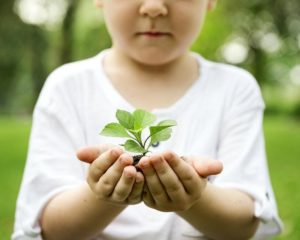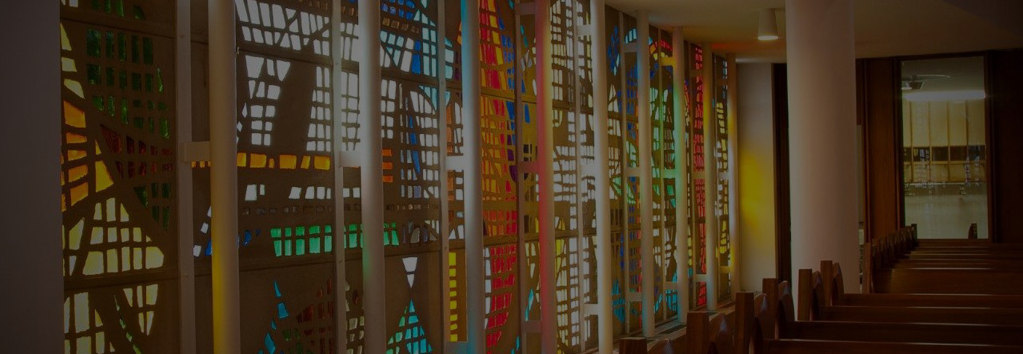What Happens When You Plant a Tree?
Beloved community,
Even as we continue to practice physical distancing from others, most of us have found that with the unfolding of springtime we can still safely spend time close to nature. That may have been one of the silent blessings of this season of pandemic, that our “shelter in place” orders came as the season of spring arrived. The Journal of Health Psychology reports that interacting with nature is a great stress reliever, and that just 30 minutes of gardening lowers the cortisol released during stress-induced fight-or-flight responses.
This spring my dear bride suggested that we expand her butterfly garden. So, we marked out an ambitious perimeter that would allow us to increase the garden’s size fourfold in the center of our backyard. As we began to dig up the turf and haul it to a pile back by the ravine, the scale of the project began to dawn upon us. But with each wheelbarrow load removed, a certain peaceful intentionality settled in. After our excavation was complete, we hauled in three yards of topsoil to the new garden, followed by dozens of bags of manure and mushroom compost. Rebecca began transplanting from her congested original garden to the newly expanded butterfly garden, I hauled in pea gravel to make paths through the vast new spread, and a layer of mulch was overlaid this past week.
Once we recovered from the wide-eyed intimidation that accompanied our first turning of the tough old sod and the first wheelbarrow load hauled to the ravine pile, we found a certain, simple pleasure in the evolution of this new gift to the monarchs, bees and countless other creatures. It was a life-giving project, an organic stress reliever, and it made us better prepared to welcome the annual butterfly migration.
 Richard Rohr spoke of the practice of gardening in his daily meditation recently, quoting poet, writer and educator Trevien Stanger from his book Order of the Sacred Earth. Stanger invites the reader into the contemplative practice of planting trees:
Richard Rohr spoke of the practice of gardening in his daily meditation recently, quoting poet, writer and educator Trevien Stanger from his book Order of the Sacred Earth. Stanger invites the reader into the contemplative practice of planting trees:
Ethnobotanist, author, and Potawatami elder Robin Kimmerer asserts, “We need acts of restoration, not only for polluted waters and degraded lands, but also for our relationship to the world. We need to restore honor to the way we live, so that when we walk through the world we don’t have to avert our eyes with shame, so that we can hold our heads high and receive the respectful acknowledgment of the rest of [the] earth’s beings.” [1] . . .
I contend that every individual can participate in [the] Great Turning, and that one of the great challenges of our time is for each of us to figure out how and where we plug into this psycho-spiritual current. . . I, for one, plant trees. . . In my more recent work as an environmental studies professor at a community college in Vermont, I’ve had a hand in planting just shy of 100,000 trees over the past 12 years. . .
What happens when you plant a tree? What happens when you wield a shovel in one hand (a human artifact) and a tree (a provisional mystery) in the other? What happens when you dig a hole (a Kali-like destruction) and plant a tree within it (an act of creativity)? What happens when you learn about your local ecology not just as an observer, but also as a participant? What happens when you embrace the wildness of a tree-being and integrate it into the semi-wild streets and streams of your local community? What happens when you crack open your isolated sense of self and plant within your heart this symbol of our ever-branching inter-being? What happens when you consider your actions in terms of your ecological and cultural legacy? What happens when you move beyond your concerns of today and inquire as to what type of ancestor you will be? Nelson Henderson posits that “. . . one true meaning of life is to plant trees under whose shade you do not expect to sit.” [2] Under whose shade do you sit beneath today? Whose shade shall you help gift for tomorrow?
Joshtrom Isaac Kureethadam once said, “Our common home is also God’s own house, permeated by the Spirit of God from the dawn of creation, where the Son of God pitched his tent in the supreme event of the incarnation.” To reflect on this incarnational theology when we consider care of the earth makes the practice of gardening or tree planting acts of joining our lives with our sacred vocation. We who are called to love one another as we have been loved are invited to love the whole of God’s good creation with like urgency, and to extend that care not just to relieve stress or pass the time, but in order to honor the Creator. God surely speaks to us in nature and gives us a glimpse into God’s own intent for we who are created in the very image of God. Let us be garden tenders and tree planters as stewards of creation.
My sisters and brothers, may we welcome the goodness of summertime in west Michigan, seeking to be good neighbors to nature itself, to God’s house, even as we continue to refrain from the embrace of our friends on life’s journey in this time of our separation. Tend a garden or plant a tree. We might relieve a little stress, and we will most certainly engage a life-giving vocation.
Grace and peace,
Pastor Bob Linstrom
[1] Robin Wall Kimmerer, Braiding Sweetgrass: Indigenous Wisdom, Scientific Knowledge, and the Teachings of Plants (Milkweed Editions: 2013), 195.
[2] Wes Henderson shared his father’s advice in Under Whose Shade: A Story of a Pioneer in the Swan River Valley of Manitoba (W. Henderson & Associates: 1986, ©1982).
Trevien Stanger, “Tree Planter,” Order of the Sacred Earth: An Intergenerational Vision of Love and Action, Matthew Fox, Skylar Wilson, and Jennifer Listug (Monkfish Book Publishing Company: 2018), 184-186.


